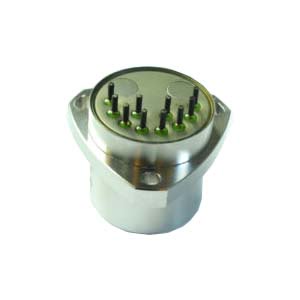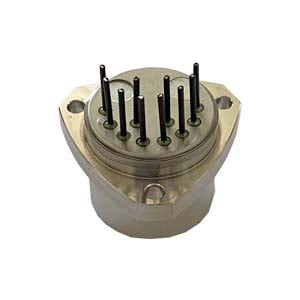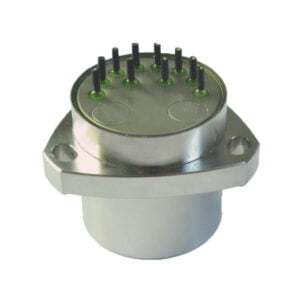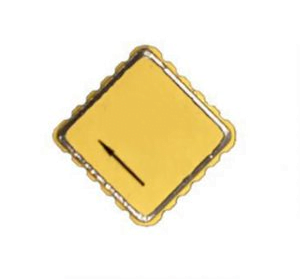With the development of MEMS technology, inertial sensor devices have become one of the most successful and widely used MEMS devices in the past few years, and micro-accelerometers are an outstanding representative of inertial sensor devices.
The theoretical basis of the micro-accelerometer is Newton's second law. According to the basic physical principle, within a system, the speed cannot be measured, but its acceleration can be measured. If the initial velocity is known, the linear velocity can be calculated by integrating, and then the linear displacement can be calculated. Combined with a gyroscope (used to measure angular velocity), objects can be precisely positioned. According to this principle, people have long used accelerometers and gyroscopes for navigation of ships, aircraft and spacecraft.
In recent years, people have used this technology for automatic driving of cars and guidance of missiles. The rapid development of the automobile industry has found a new application field for the accelerometer. The anti-collision airbag of the car is controlled by the accelerometer. As the most mature inertial sensor application, the current MEMS accelerometer has a very high degree of integration, that is, the sensing system and the interface circuit are integrated on one chip.
In the history of oil and gas drilling, the basic mechanisms and working principles of downhole sensor technology have changed only twice. The invention of borehole sensors dates back to the 1920s, before which the industry was largely blind to drilling. Subsequently, the industry invented measuring instruments using simple techniques, such as acid etch marks in bottles or simple mechanical means to measure well inclination.A major revolution swept through the industry in the 1970s with the invention of magnetic steering tools, the principles of which are still the basis for most modern directional drilling tools. However, we are witnessing the dawn of a new era. Directional drilling sensors based on MEMS technology are becoming a reliable choice for borehole measurements.
In resource exploration, inertial technology is mainly used to measure the trajectory of the well and the actual position of the bit, so as to ensure that the well depth reaches the predetermined position. With the depletion of petroleum resources, exploration and development becomes more and more complicated, so higher precision and more reliable oil inclinometer are needed. The application of inertial technology can meet this requirement. By using high-precision and high-resolution inertial and magnetic sensors to accurately measure engineering parameters such as inclination Angle, azimuth Angle and tool face Angle during drilling, real-time monitoring of well trajectory and bit position can be realized. Among them, capacitive MEMS accelerometers are relatively mature in terms of high temperature resistance, impact resistance and accuracy.
Among them, capacitive mems accelerometers are relatively mature in high temperature resistance, shock resistance and accuracy. ERICCO's ER-MA-5 High Accuracy MEMS Accelerometer has the characteristics of small volume, light weight and low energy consumption that can be widely used in Inertial measurement: inertial guidance, overload measurement, combined navigation;Tilt measurement: antenna attitude, platform measurement, dip test;Vibration measurement: mechanical equipment, bridge dam, safety test.
Capacitive micro-accelerometers are the most common, and there are also mature and popular products. The basic principle is to use the capacitor as the detection interface to detect the micro-displacement of the inertial mass due to the action of the inertial force. The mass block is supported and connected to the base by elastic microbeams. One electrode plate for detecting capacitance is generally arranged on the moving mass block, and one electrode plate is configured on the fixed base body, which is a typical sandwich-structure flat capacitive micro-accelerometer. And the developed capacitive micro-accelerometer uses comb-tooth array capacitance as the detection interface. The capacitive micro-accelerometer has high sensitivity and measurement accuracy, good stability, small temperature drift, extremely low power consumption, and strong overload protection capability; it can use electrostatic force to realize feedback closed-loop control, which significantly improves the performance of the sensor.A major revolution swept through the industry in the 1970s with the invention of magnetic steering tools, the principles of which are still the basis for most modern directional drilling tools. However, we are witnessing the dawn of a new era. Directional drilling sensors based on MEMS technology are becoming a reliable choice for borehole measurements
More Technical Questions
1.How to choose a MEMS accelerometer?
2.What is the Purpose of the Accelerometer Senor?
3.Why do we Need Accelerometer?
4.The Role of MEMS Accelerometers in Inertial Navigation
5.What can you do with an Accelerometer?
6.What are the advantages of MEMS accelerometers?
Products in Article







